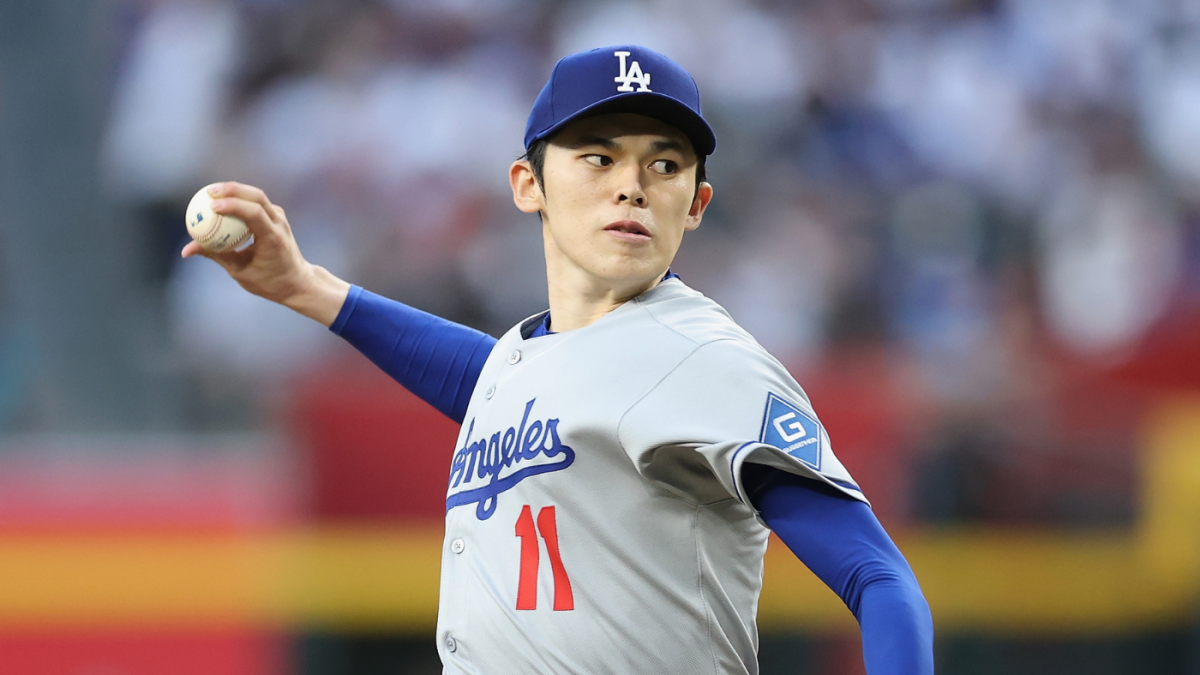Navigating the Storm: Roki Sasaki’s Shoulder Injury and Its Ripples Through the Dodgers’ 2025 Season
Unfolding a Promising Journey Interrupted
Roki Sasaki entered the Los Angeles Dodgers’ roster with the kind of buzz reserved for generational talents. His reputation as the “Monster of the Reiwa Era” was built on stellar performances in Japan’s Nippon Professional Baseball, where his explosive pitching commanded attention. However, the transition to Major League Baseball has hit a rough patch due to a right shoulder impingement, derailing the momentum of his rookie season and posing serious questions about his role in the Dodgers’ 2025 campaign.
This injury isn’t merely a physical setback—it shapes strategic decisions, impacts player development, and forces the Dodgers to rethink their pitching rotation’s resilience. At the heart lies a young pitcher striving to balance his raw talent with the rigors of a new league and the demands of his own body.
Understanding the Injury: More Than Just Shoulder Pain
Shoulder impingement occurs when the tendons or bursa within the shoulder become pinched during arm movements, particularly problematic for pitchers who rely heavily on shoulder flexibility and strength for velocity and control. Sasaki’s diagnosis in May 2025 echoed a familiar issue from his final Japanese season, but the stakes feel higher now, given the intensity and workload in MLB.
Notably, Sasaki’s fastball velocity—one of his signature attributes—slipped below his typical 96-99 mph range prior to the injury shutdown. This dip may signal not only the injury’s physical toll but also the team’s mindful management of his throwing workload, aiming to prevent exacerbation. Dodgers management’s decision to halt his throwing indefinitely reflects a cautious philosophy, opting for long-term health preservation over short-term production.
The Rookie Trials: Performance Challenges in a New Arena
Sasaki’s initial MLB statistics paint a picture of a rookie encountering the demanding adjustment from NPB to MLB. His earned run average (ERA) ballooned to 4.72 over 34.1 innings, sharply contrasting with his impressive 2.10 ERA in Japan. Control has been a consistent challenge, marked by walks and command lapses, which often plague pitchers acclimating to a higher caliber of hitters and greater mental intensity.
The compounded effect of injury and adaptation pressures illustrates the delicate balance young international players face. Sasaki’s “unorthodox delivery,” while uniquely effective, might also contribute to mechanical stresses, adding complexity to his rehabilitation and future performance planning.
Dodgers’ Strategic Pivot: Managing Without Sasaki
Facing uncertainty over Sasaki’s return, Dodgers manager Dave Roberts openly acknowledged the necessity to “plan on life without him” for the season. This pragmatic stance underscores the importance of flexibility in roster management given the unpredictability surrounding injuries, particularly in high-impact roles such as starting pitcher.
The Dodgers have turned to other arms, including recalling Emmet Sheehan from the 60-day injured list, to fill rotation gaps. This adaptation highlights the broader resilience required of a team balancing star power with depth—a balancing act complicated by multiple pitching injuries on the roster, including those of Shohei Ohtani and Dustin May.
The choice to prioritize Sasaki’s health hints at a broader trend in baseball medicine: recognizing that rushed returns can lead to chronic issues, and that preserving a player’s long-term viability is paramount to sustaining competitive advantage.
Long-Term Outlook: Rehabilitation and Reinvention
Sasaki’s injury narrative is entwined with prior health battles, namely his 2024 torn labrum surgery that sidelined him for an entire season. The cumulative impact questions not only his physical durability but also the viability of his pitching mechanics in a demanding professional environment.
Dodgers’ coaching and medical staff are poised to take a methodical approach, intensifying rehabilitation oversight and possibly reconsidering workload patterns. This could involve incremental throwing programs, biomechanical analysis, and customized conditioning aimed at mitigating injury recurrence.
Importantly, Sasaki’s future success may depend on reconciling his unique pitching style with injury-preventive measures—potentially requiring adjustments that preserve effectiveness without amplifying strain.
Beyond Sasaki: The Broader Dodgers Pitching Context
Sasaki’s injury compounds an already stressed pitching staff. The Dodgers’ significant offseason investments underscored an ambition to craft a rotation capable of enduring the grind of a full MLB schedule. However, with key pitchers sidelined due to injury, strategic depth has become an imperative rather than a luxury.
This scenario shines a light on the fragile nature of relying heavily on young phenoms transitioning from other leagues, especially when their health history includes significant setbacks. The Dodgers’ ability to adapt their rotation, maintain competitiveness, and foster Sasaki’s recovery will be scrutinized as the season unfolds.
Conclusion: Patience and Prudence as Pillars for the Future
Roki Sasaki’s 2025 season serves as a vivid reminder that even the most electrifying talents face vulnerabilities that challenge careers and team strategies alike. His shoulder injury not only pauses his rookie journey but also prompts a measured reassessment of how elite young pitchers are introduced and nurtured in MLB’s demanding environment.
For the Dodgers, this moment demands patience, medical prudence, and tactical agility. While the immediate future may be clouded by uncertainty, the ultimate aspiration endures: to see Sasaki evolve into the ace that his prodigious talent promises, contributing sustainably to the Dodgers’ pursuit of excellence.
In the delicate interplay of health, performance, and potential, Sasaki’s story is far from over—it’s an evolving chapter that encapsulates the highs and lows every team navigates in the relentless quest for baseball greatness.












